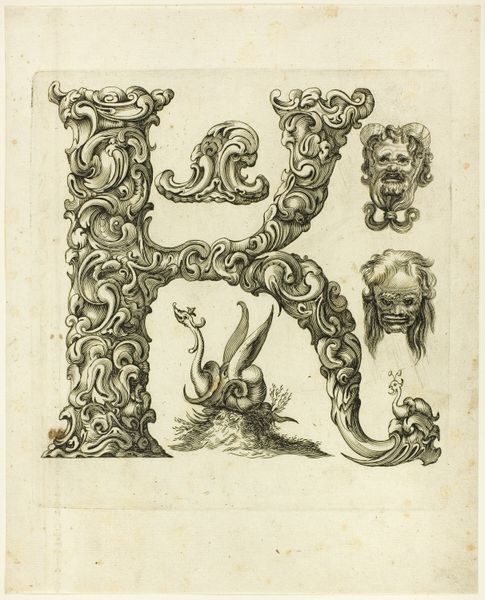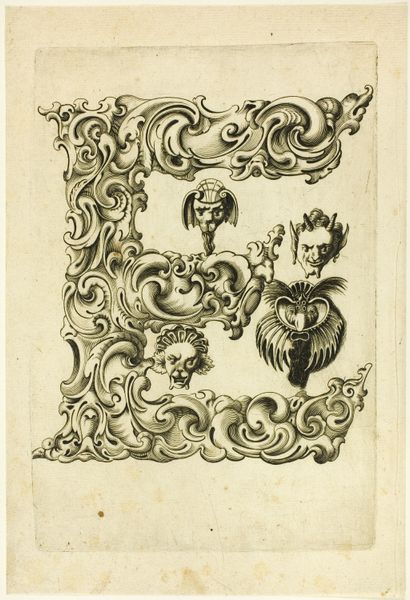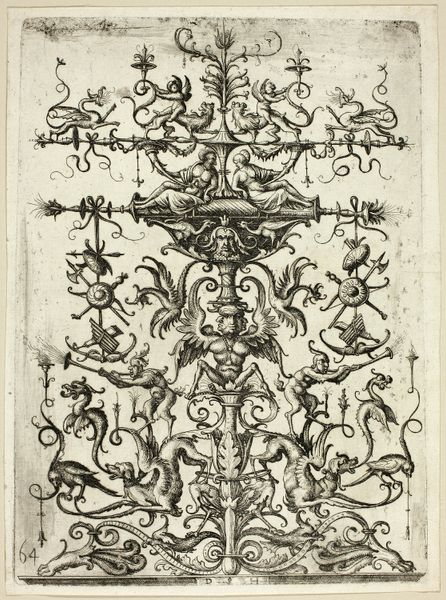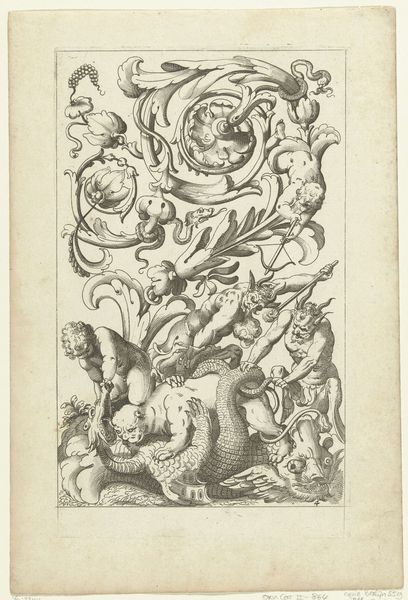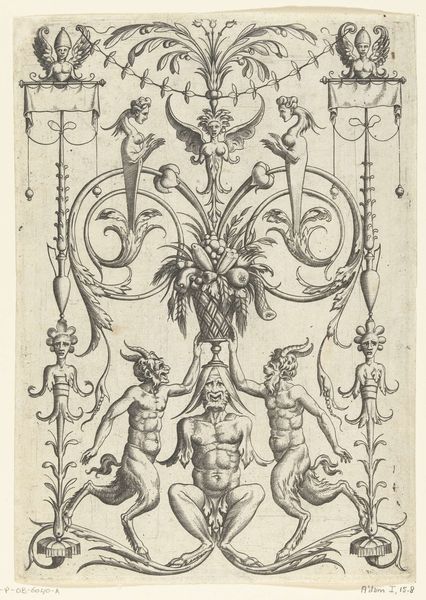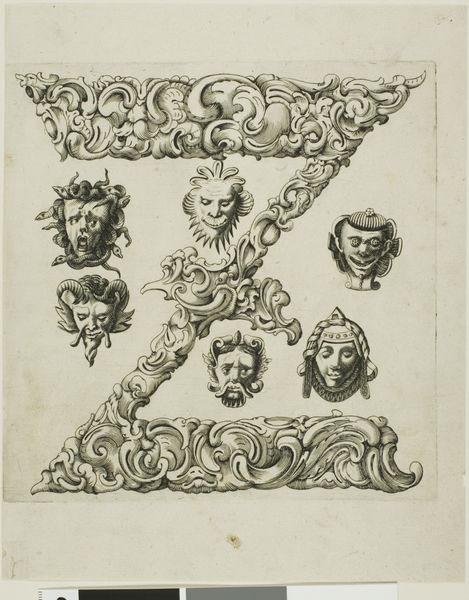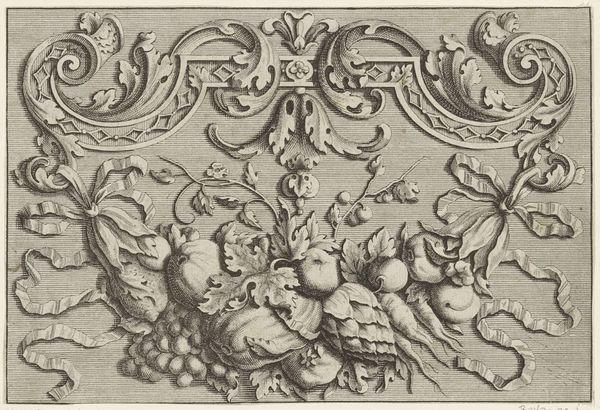
drawing, print, paper, ink, engraving
#
drawing
#
baroque
# print
#
paper
#
ink
#
geometric
#
engraving
Dimensions: 253 × 190 mm
Copyright: Public Domain
Editor: This is Peter Aubry’s "Letter X," an engraving on paper from 1630. The level of detail is astonishing. It feels like such a deliberate display of skill, almost like an advertisement for the engraver's talent. What's your take on it? Curator: It's crucial to see this within its socio-economic context. Engravings weren't merely decorative; they facilitated the dissemination of knowledge and designs. Consider the labor involved: the skilled hand meticulously carving the metal plate, the paper-making process itself, the printing, and then the distribution. This “Letter X” highlights the commodification of art and skill. How was the Baroque aesthetic consumed, replicated, and adapted through printmaking? Editor: So, you're less interested in the artistry of the swirls and the grotesque faces, and more interested in what this *is*? The labor that went into it, and how the artist could essentially sell multiples? Curator: Precisely! The “artistry,” as you call it, becomes a function of its market value. It embodies artistic and artisanal labour made explicitly and repeatedly available. Think about who purchased such engravings. Were they other artists looking for inspiration, artisans seeking patterns, or wealthy patrons curating their collections of 'high art' on paper? Each of these intended uses dictates what its value would be perceived as, but even further so, that an image of artistry is what is available and worth exchanging on a wider economic scale than a unique painting might be. Editor: That's fascinating. I was initially drawn to the visual complexity, but thinking about it as a product of its time and a tool for wider distribution really changes my perspective. It connects the artwork to a broader network of makers and consumers. Curator: Exactly! It underscores that art doesn’t exist in a vacuum. Every choice, from the swirling designs to the very medium itself, is intertwined with materials, means, and socio-economic implications. Editor: Well, I'll never look at a print the same way again. Thanks for broadening my perspective. Curator: My pleasure! Considering art through the lens of its production and consumption makes the viewing process that much richer.
Comments
No comments
Be the first to comment and join the conversation on the ultimate creative platform.
